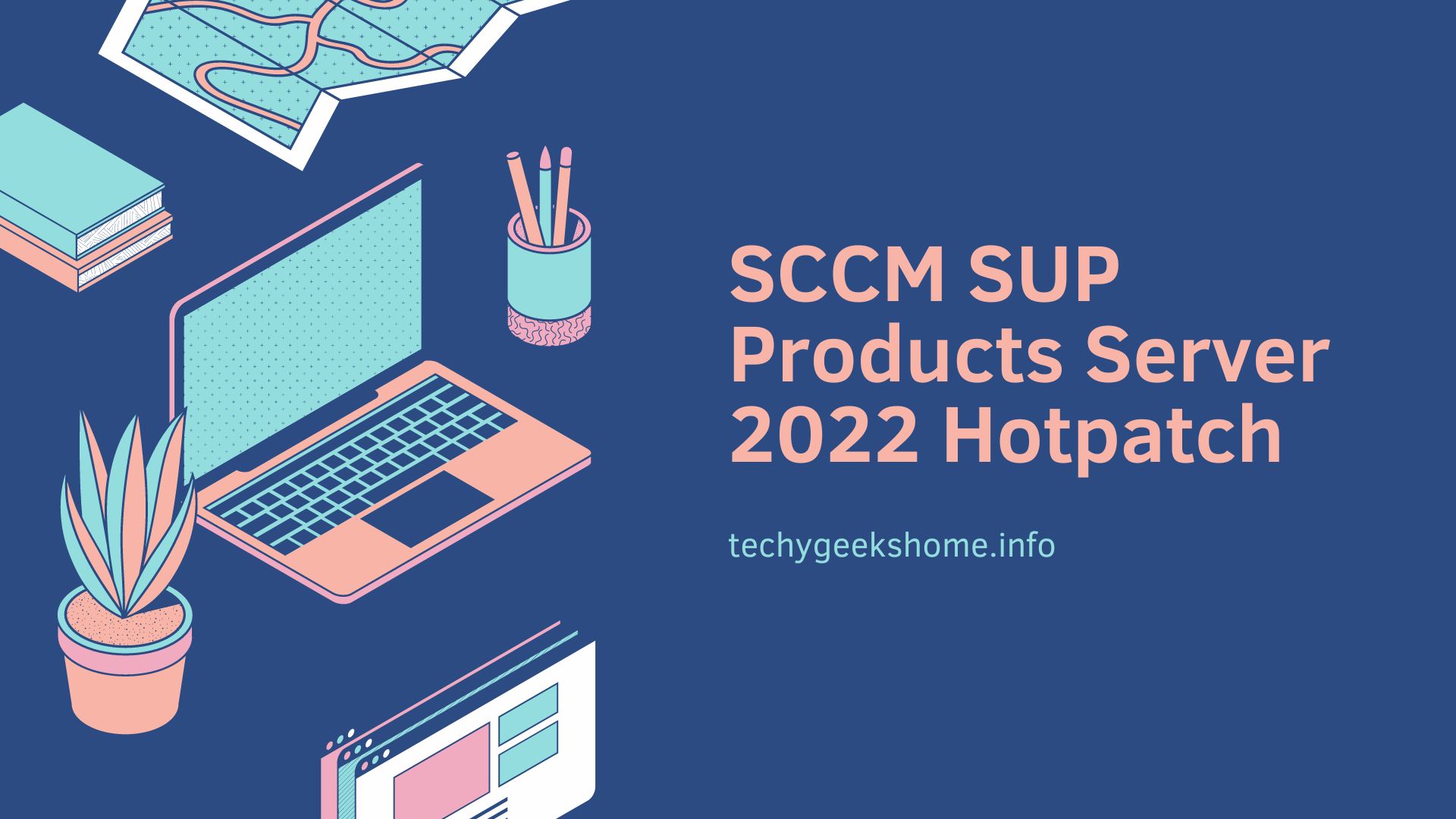Estimated reading time: 4 minutes
Following on in our series on SCCM SUP Product definitions, today we are looking at the Server 2022 Hotpatch Product.
You can view the other product definition posts we have posted using the button below:
Definition and Purpose
- Server 2022: Refers to Microsoft’s Windows Server 2022 operating system, designed for enterprise and datacenter environments with enhanced security, performance, and hybrid cloud capabilities.
- Hotpatch: Hotpatching is a method of applying patches or updates to a system without requiring a reboot. This is particularly beneficial for servers as it minimizes downtime and disruption.
What It Covers
The Server 2022 Hotpatch category includes updates that can be applied to Windows Server 2022 instances using the Hotpatching technology. These updates are designed to:
- Address critical security vulnerabilities.
- Fix important bugs and stability issues.
- Apply performance improvements.
All of this is done without the need to reboot the server, which is crucial for maintaining high availability in enterprise environments.
Importance
- Minimized Downtime: Since hot patches do not require a reboot, servers can stay up and running while still receiving important updates, ensuring continuous availability of services.
- Enhanced Security: Hot patches often include security fixes that can be applied immediately, reducing the window of vulnerability.
- Operational Efficiency: Reduces the operational overhead associated with scheduling and performing reboots, especially in environments where downtime is costly or disruptive.
Application
- Deployment: Hot patches are applied directly to the running system without the need to restart, making them suitable for environments where uptime is critical.
- Management in SCCM: In SCCM, enabling the Server 2022 Hotpatch category allows you to synchronize and deploy these updates to your Windows Server 2022 instances.
Configuring Server 2022 Hotpatch in SCCM SUP
To enable and manage Server 2022 Hotpatch updates in SCCM:
- Open the SCCM Console: Navigate to the Administration workspace.
- Software Update Point Component Properties: Under Site Configuration, select Servers and Site System Roles, then choose the server hosting the Software Update Point role.
- Select Products: In the Software Update Point Component Properties dialog, go to the Products tab.
- Enable Server 2022 Hotpatch: Check the box next to “Server 2022 Hotpatch” to include these updates in the synchronization.
- Synchronize Updates: Initiate a software update synchronization to download the latest hotpatches.
By enabling the Server 2022 Hotpatch category in SCCM, you can ensure that your Windows Server 2022 instances receive crucial updates without the need for disruptive reboots, thereby maintaining both security and availability.
Conclusion
Incorporating Server 2022 Hotpatch updates within your SCCM SUP setup is a strategic move to enhance the security, stability, and efficiency of your Windows Server 2022 environments.
By utilising hot patching technology, organizations can apply critical updates without the need for reboots, thus maintaining high availability and minimizing downtime. This not only ensures that systems are protected against vulnerabilities promptly but also streamlines operational processes by reducing the need for scheduled maintenance windows.
Embracing Server 2022 Hotpatch updates is essential for any enterprise aiming to maintain robust and resilient IT infrastructure.
FAQ
What is the main benefit of using Server 2022 Hotpatch updates?
The primary benefit is the ability to apply updates without needing to reboot the server, which minimizes downtime and maintains the continuous availability of services.
Can Server 2022 Hotpatch updates be managed through SCCM?
Yes, by enabling the Server 2022 Hotpatch category in the SCCM Software Update Point, you can synchronize and deploy these updates to your Windows Server 2022 instances.
What steps are involved in enabling Server 2022 Hotpatch updates in SCCM?
The steps include opening the SCCM Console, navigating to the Software Update Point Component Properties, selecting the Products tab, enabling the Server 2022 Hotpatch category, and synchronizing updates.
Glossary
Server 2022: Microsoft’s Windows Server 2022 operating system, designed for enterprise and datacenter environments with advanced security, performance, and hybrid cloud capabilities.
Hotpatch: A method of applying patches or updates to a system without requiring a reboot, crucial for minimizing downtime and maintaining service availability.
SCCM (System Center Configuration Manager): A systems management software by Microsoft that allows administrators to manage the deployment and security of devices and applications across an enterprise.
SUP (Software Update Point): A component in SCCM that integrates with Windows Server Update Services (WSUS) to manage software updates for the managed devices.
Synchronization: The process of downloading the latest updates from Microsoft Update or another source to ensure that the SCCM database is up-to-date with the latest patches and updates.
Reboot: The process of restarting a computer system, typically required after applying updates to ensure they take effect, which can result in downtime.
Vulnerability: A weakness or flaw in a system that can be exploited by threats to gain unauthorized access or cause damage.
Operational Overhead: The additional time and resources required to perform routine maintenance tasks, such as scheduling and executing server reboots.
Share this content:
Discover more from TechyGeeksHome
Subscribe to get the latest posts sent to your email.
